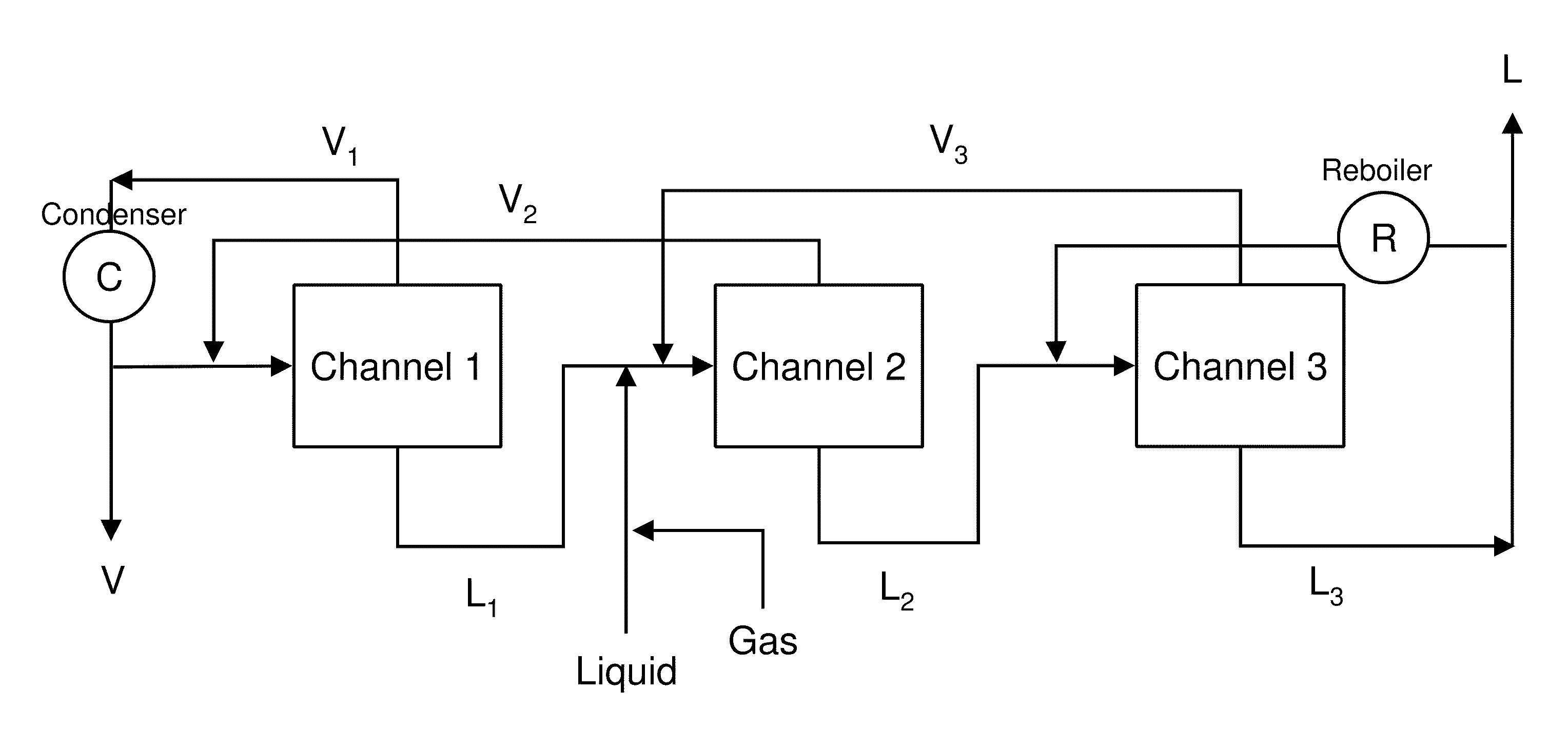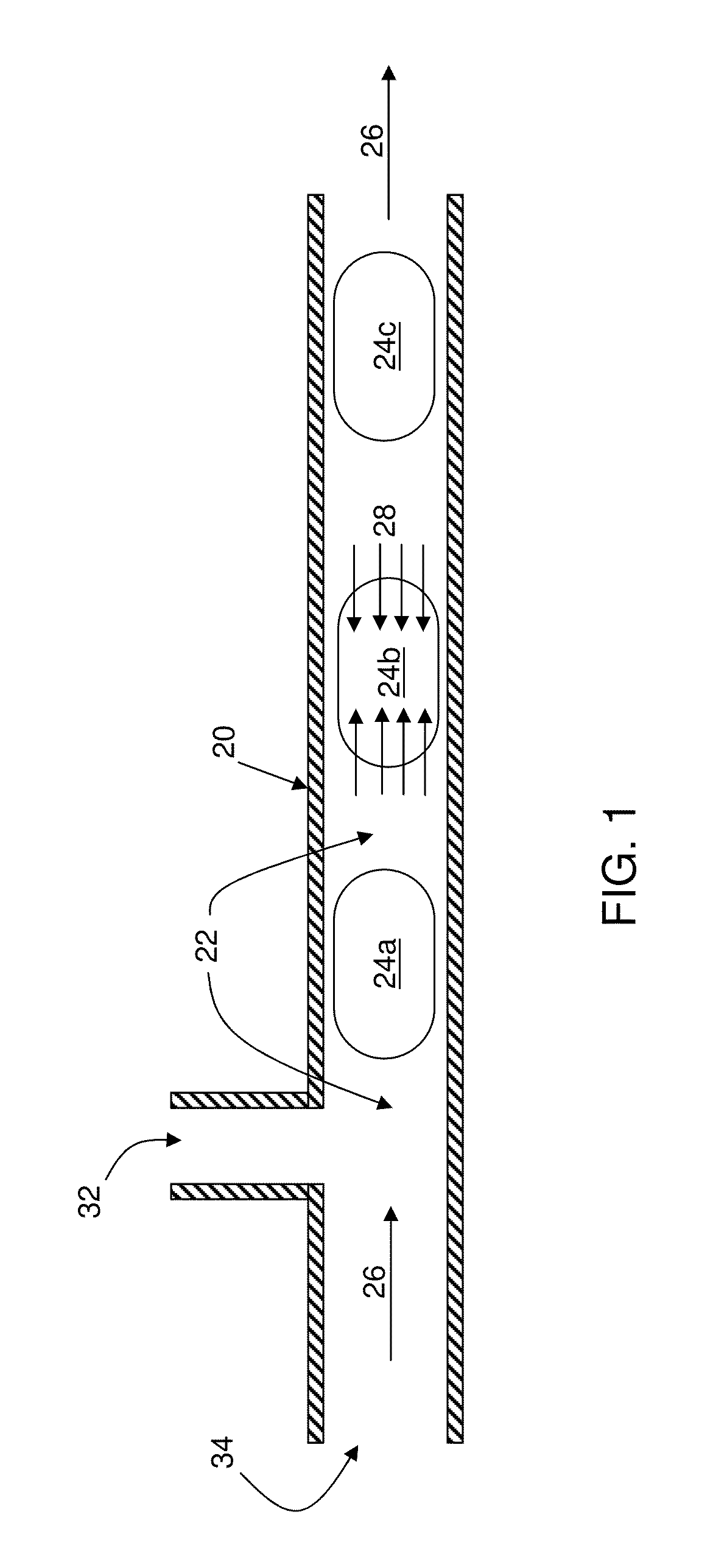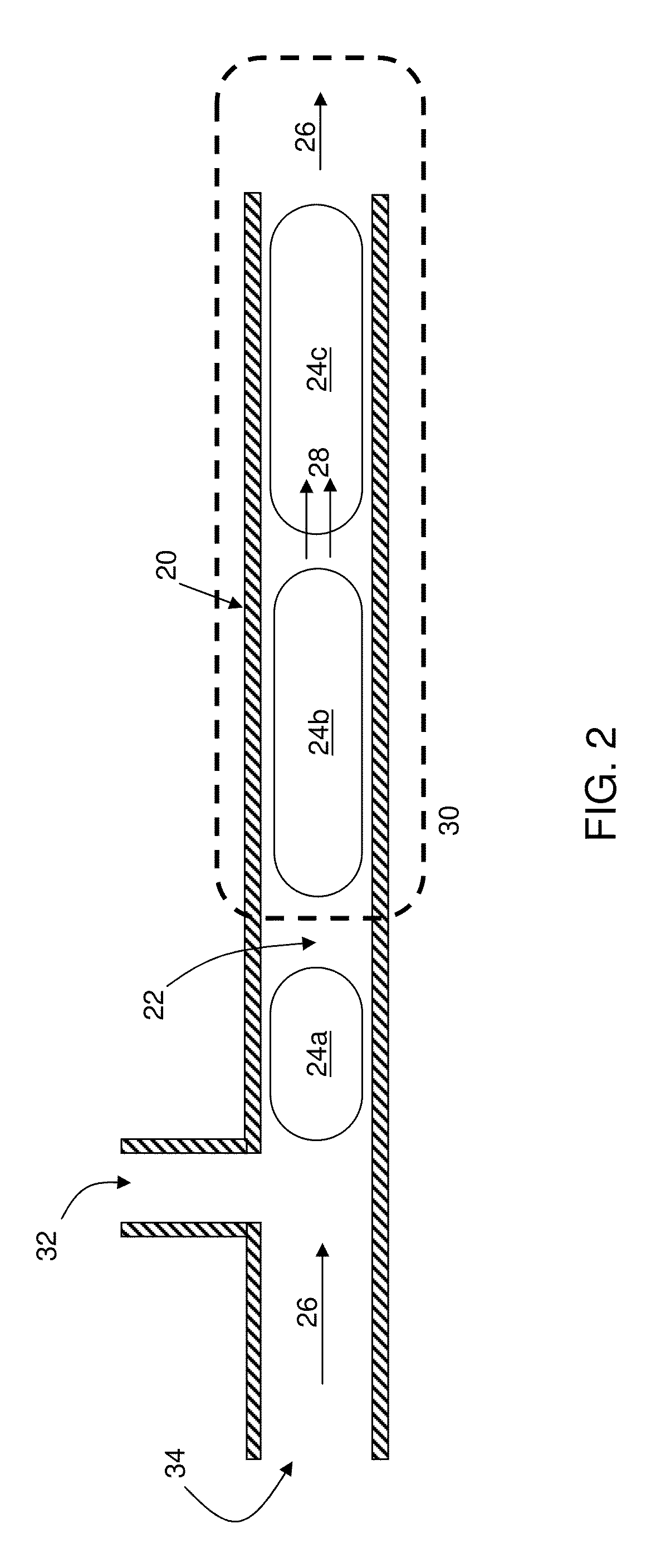Small-scale method and apparatus for separating mixtures
a technology of mixture and small-scale separation, which is applied in the direction of water/sewage treatment by osmosis/dialysis, combustion air/fuel air treatment, water/sewage treatment by ion exchange, etc., can solve the problems of difficult to achieve continuous reaction and separation schemes using bubble point separation techniques
- Summary
- Abstract
- Description
- Claims
- Application Information
AI Technical Summary
Benefits of technology
Problems solved by technology
Method used
Image
Examples
example 1
[0077]This example illustrates the separation of a two-component mixture into enriched fractions. A feed comprising 50 mol % methanol and 50 mol % toluene was delivered at 30 microliters / minute to a capillary heated to a temperature of 70° C. (greater than the boiling point of methanol of 64° C.). Nitrogen gas was injected at an inlet located upstream of the heated zone but downstream of the liquid inlet, thus enabling segmented flow. As can be seen in FIG. 4, separation of vapor from liquid resulted in methanol mole fractions of 65% and 17%, respectively. For methanol-toluene in equilibrium at 70° C., thermodynamic calculations estimate vapor and liquid mole fractions of 76% and 13%. These results demonstrate conclusively that vapor-liquid equilibrium was achieved continuously, and microdistillation was possible using the method outlined above.
[0078]The multiphase flow that enabled controlled flashing of liquid, and in turn distillation, was captured using a microfluidic device. FI...
example 3
[0080]This example illustrates the separation of a two-component mixture into enriched fractions using a two-stage separation apparatus. The experiments outlined in this example were performed by connecting two of the devices described in Example 1 in series. A feed comprising 50 mol % methanol and 50 mol % toluene was delivered at 30 microliters / minute to a capillary heated to a temperature of 70° C. (greater than the boiling point of methanol of 64° C.). Nitrogen gas was injected at an inlet located upstream of the heated zone but downstream of the liquid inlet, thus enabling segmented flow. As can be seen in FIG. 6, separation of vapor from liquid resulted in methanol mole fractions of 77% in the vapor and 29% in the liquid. For methanol-toluene in equilibrium at 70° C., thermodynamic calculations (i.e., McCabe-Thiele analysis) estimated methanol mole fractions of 80% in the vapor and 29% in the liquid.
[0081]The bottoms from Stage 1 (denoted L1 in FIG. 6) was fed to a second capi...
example 4
[0082]This example describes the use of microfluidic distillation in a multi-step chemical synthesis system to exchange reaction solvents (FIG. 7).
[0083]The Heck reaction is a versatile transformation in organic chemistry that finds applications in the production of active pharmaceutical ingredients, natural product synthesis, and fine chemical production. In addition to aryl halides, aryl triflates and nonaflates can be used as coupling partners to extend the scope of the reaction to a wider range of starting materials and to access regioisomeric products. Because of this, examples of Heck reactions with aryl triflates are common; however, the almost complete lack of commercial availability of aryl triflates necessitates their preparation prior to their use in Heck reactions.
[0084]Triflates are commonly prepared in chlorinated solvents from phenols and trifluoromethanesulfonic anhydride using stoichiometric amine bases. After the reaction, a general workup procedure can include rem...
PUM
| Property | Measurement | Unit |
|---|---|---|
| boiling point | aaaaa | aaaaa |
| boiling point | aaaaa | aaaaa |
| boiling point | aaaaa | aaaaa |
Abstract
Description
Claims
Application Information
 Login to View More
Login to View More - R&D
- Intellectual Property
- Life Sciences
- Materials
- Tech Scout
- Unparalleled Data Quality
- Higher Quality Content
- 60% Fewer Hallucinations
Browse by: Latest US Patents, China's latest patents, Technical Efficacy Thesaurus, Application Domain, Technology Topic, Popular Technical Reports.
© 2025 PatSnap. All rights reserved.Legal|Privacy policy|Modern Slavery Act Transparency Statement|Sitemap|About US| Contact US: help@patsnap.com



